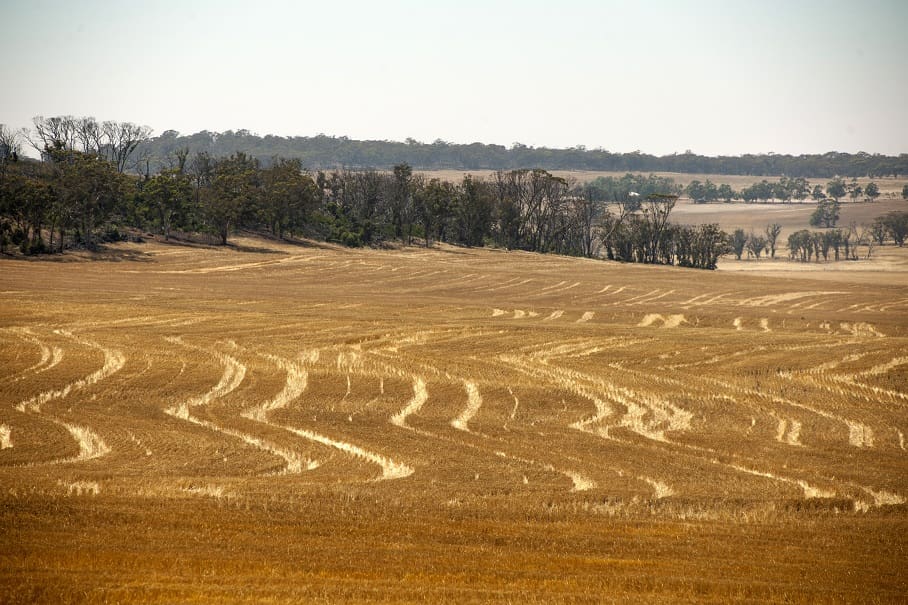
Some WA growers will need to manage high stubble loads heading into the 2019 cropping season. (Photo: GRDC)
WESTERN Australian grain growers with high levels of crop stubble following a good season in some parts of the state’s grainbelt in 2018 are encouraged to consider options other than burning paddocks in the lead up to seeding this year.
The University of Western Australia’s (UWA) School of Agriculture and Environment and Institute of Agriculture lecturer, Ken Flower, who has conducted farming systems research with Grains Research and Development Corporation (GRDC) investment, stressed the importance of retaining stubble to ensure good soil moisture retention and crop establishment, and to minimise soil erosion.
He also said there were ways to maximise pre-emergent herbicide efficacy in areas with heavy stubble loads.
“High stubble levels can cause issues for growers when sowing crops, but it can be managed,” Dr Flower said.
“Particularly in drier areas of WA, retaining stubble has proven yield benefits, largely from additional moisture retention leading into and during the early part of the growing season.
“Trials conducted over about 30 years by Department of Primary Industries and Regional Development (DPIRD) researcher Glen Riethmuller, at Merredin in WA’s eastern grainbelt, showed an overall average annual 5 per cent yield improvement where stubble was retained.
“There was a yield increase in most years of these trials, and this increase was even greater than 5 per cent in high yielding years.”
Dr Flower said to manage heavy stubble loads at seeding time, growers should make sure there were no ‘pinch points’ on the seeder bar where stubble could accumulate, and that tynes were spaced as wide apart as possible.
“Consider using coulters on the front of the seeder – these can cut through the residue and allow the tynes to pass through the stubble more easily,” he said.
“Growers have also used ‘stubble tubes’ attached to the front of the tyne, particularly with curved tynes, to help with the flow of stubble.
“Also, if you have thick stubbles, row spacings of 25 to 30 centimetres (10 to 12 inches) will work better than narrower row spacings.
“Seeding between the previous year’s stubble rows, with 2cm auto-steer on the tractor, will also help with managing thick stubble.”
Dr Flower said to ensure maximum herbicide efficacy in areas where there was heavy stubble, water rates should be as high as possible.
“Significant amounts of herbicides can be intercepted by thick stubble and some chemicals like pyroxasulfone (Sakura) can remain on the stubble and still result in good weed control when washed off by rain up to two weeks after application.”
Dr Flower said heavier than usual cereal stubbles could immobilise (lock up) some surfaced applied soil nitrogen, and in these situations, growers might benefit from deep placement of nitrogen at seeding time, away from the decomposing stubbles.
“There are also some nutritional implications from burning stubble, including the loss of nitrogen, potassium and sulfur,” he said.
Dr Flower said that, other than ensuring maximum soil moisture retention, the other main benefit of preserving stubbles was preventing wind erosion of topsoil and organic matter.
He said options other than burning whole paddocks included windrow burning if stubble had been windrowed at harvest and using livestock to graze stubbles.
“Many growers have planned to do windrow burning for weed seed control and already cut their stubble low at harvest time, which helps with stubble management. Burning the windrows will reduce stubble loads to manageable levels,” Dr Flower said.
“Research has shown that windrow burning reduces stubbles by 40 to 60 per cent, but clearly this operation has to be carried out under carefully managed conditions to ensure the whole paddock doesn’t burn.
“Grazing paddocks with livestock can also reduce stubble loads slightly, but in some cases grazing with large numbers of sheep can loosen stubble material and actually make conditions worse at seeding time.”
Source: GRDC
More information: http://bit.ly/2EC7ULD





HAVE YOUR SAY